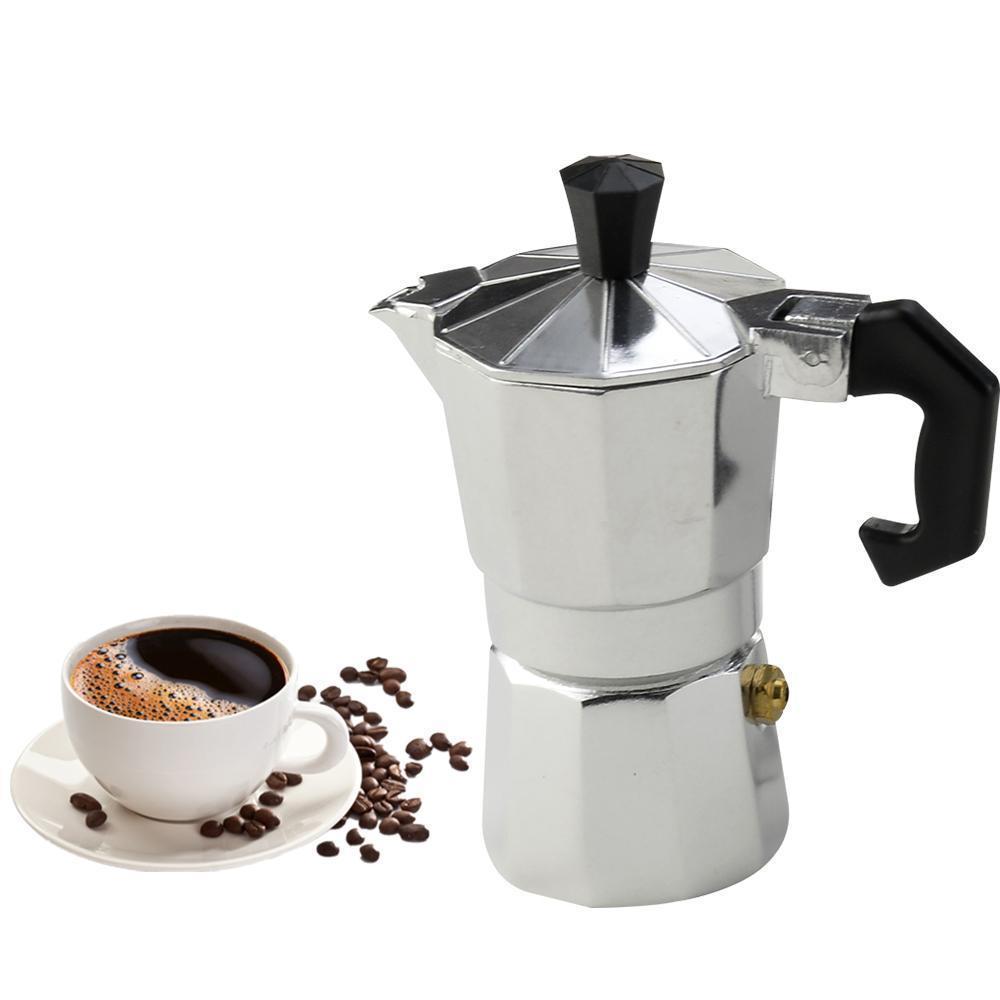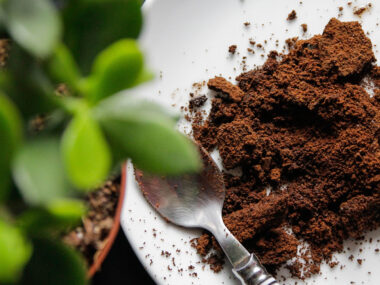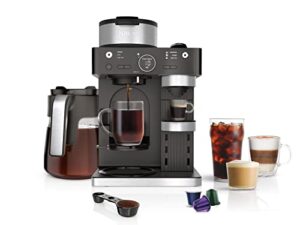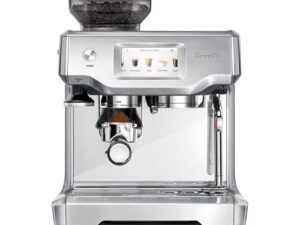To make Cuban coffee, you need a few essential ingredients and a unique brewing method. It’s rich, sweet, and packs a punch in every sip.
Cuban coffee, or café cubano, is a staple in Cuban culture. It’s more than just a drink; it’s a daily ritual. This strong, sweet espresso is made using a specific method that creates its distinct flavor. Whether you’re a coffee lover or just curious, learning how to make Cuban coffee is both fun and rewarding.
Imagine the aroma of freshly brewed espresso mingling with the sweetness of whipped sugar. This guide will walk you through the steps to create this delightful beverage at home. Let’s get started on making your own authentic Cuban coffee!
Essential Ingredients
Cuban coffee, or café cubano, is a delicious and strong espresso. The secret to making this delightful beverage lies in the ingredients. Understanding the essential ingredients helps to recreate the perfect Cuban coffee experience at home. Here are the three key components you need.
Coffee Beans
The coffee beans are the heart of Cuban coffee. Choosing the right beans is crucial for the authentic taste. Espresso roast coffee beans are the best choice. They are dark, rich, and provide the strong flavor that Cuban coffee is known for.
Here are some important points about the coffee beans:
- Dark roast: Cuban coffee uses dark-roasted beans. These beans have a bold and intense flavor.
- Freshly ground: Grind the beans just before brewing. Freshly ground beans ensure maximum flavor and aroma.
- Quality matters: Opt for high-quality beans. Good quality beans result in a better-tasting coffee.
Using freshly ground, dark-roasted espresso beans is essential. It ensures the coffee is strong and aromatic, just like the traditional Cuban coffee.
Sugar
Sugar plays a significant role in Cuban coffee. It’s not just for sweetness; it creates a unique texture and flavor. Traditional Cuban coffee uses brown sugar. Brown sugar adds a caramel-like richness.
Here is why sugar is important:
- Sweetness balance: The strong coffee needs sugar to balance the bitterness.
- Texture: Sugar is whipped with the first drops of espresso. This creates a creamy foam called “espuma.”
- Authentic taste: Using brown sugar gives the coffee its authentic Cuban taste.
To make the perfect Cuban coffee, follow these steps:
- Place a few teaspoons of brown sugar in a cup.
- Pour the first few drops of brewed espresso over the sugar.
- Whip the sugar and espresso until it forms a creamy foam.
The espuma is essential. It makes Cuban coffee unique and adds a delightful texture to each sip.
Water
Water is another crucial ingredient in Cuban coffee. Clean, fresh water ensures the coffee brews perfectly. Filtered water is the best choice.
Here are key points about water:
- Clean water: Use filtered or bottled water. Avoid tap water that may have impurities.
- Temperature: Water should be hot but not boiling. Ideal temperature is around 200°F (93°C).
- Quantity: Use the right amount of water. Too much water can dilute the coffee.
Using clean, hot water helps extract the flavors from the coffee beans. Follow these tips for the best results:
- Use a coffee maker that heats water to the right temperature.
- Measure the water accurately for each serving.
- Avoid letting the water boil as it can burn the coffee.
Proper water quality and temperature are vital. They ensure the coffee is strong, flavorful, and true to its Cuban roots.

Credit: www.youtube.com
Choosing The Right Beans
Introduction paragraph about How to Make Cuban Coffee and Choosing the Right Beans…
Arabica Vs. Robusta
Choosing the right beans is crucial for making authentic Cuban coffee. The two main types of coffee beans are Arabica and Robusta. Each has unique characteristics that affect the flavor, aroma, and overall experience of your coffee.
Arabica beans are known for their smooth and rich flavors. They often have a hint of sweetness and a higher level of acidity. These beans grow at higher altitudes and tend to have a more complex taste profile.
- Flavor: Smooth, sweet, complex
- Acidity: High
- Growing conditions: High altitudes
Robusta beans have a stronger, more bitter taste. They contain more caffeine than Arabica beans and grow at lower altitudes. These beans are often used in espresso blends for their strong flavor and thick crema.
- Flavor: Strong, bitter
- Acidity: Low
- Growing conditions: Low altitudes
When making Cuban coffee, many prefer a blend of Arabica and Robusta beans. This combination offers a balanced flavor profile that is both strong and smooth. Experiment with different ratios to find the perfect blend for your taste.
Local Brands
Supporting local coffee brands not only ensures fresh beans but also helps the community. Several Cuban brands offer high-quality beans that are perfect for making authentic Cuban coffee.
Café Bustelo is a popular brand known for its strong, bold flavor. It’s widely available and often used in Cuban households. This brand offers a blend of Arabica and Robusta beans, providing a rich and robust taste.
- Flavor: Bold, strong
- Availability: Widely available
- Bean type: Arabica and Robusta blend
La Llave is another well-known brand that offers a smooth and aromatic coffee. This brand is often chosen for its balanced flavor, making it ideal for Cuban coffee. La Llave uses a blend of high-quality beans to achieve its distinct taste.
- Flavor: Smooth, aromatic
- Availability: Widely available
- Bean type: High-quality blend
For a more authentic experience, try sourcing beans directly from Cuba. Brands like Cubita and Montecristo offer premium beans that capture the essence of Cuban coffee. These brands focus on quality and traditional growing methods, ensuring a true Cuban flavor.
- Cubita: Premium, traditional
- Montecristo: High quality, authentic
Choosing the right beans is key to making delicious Cuban coffee. Whether you prefer Arabica, Robusta, or a blend, local brands offer a variety of options to suit your taste.
Brewing Methods
Cuban coffee is known for its strong, sweet flavor. Brewing this coffee requires special techniques and tools. Let’s explore two popular methods: the Moka Pot and the Espresso Machine.
Moka Pot
The Moka Pot is a classic method for brewing Cuban coffee. This stovetop coffee maker is popular in many Cuban households. It creates a rich, strong coffee that is similar to espresso.
To use a Moka Pot, follow these steps:
- Fill the bottom chamber with water up to the safety valve.
- Insert the filter basket and fill it with finely ground coffee. Level the coffee grounds but do not tamp them down.
- Screw the top chamber onto the bottom chamber tightly.
- Place the Moka Pot on the stove over medium heat.
- Wait for the coffee to brew and fill the top chamber. You will hear a hissing sound when it’s done.
Once the coffee is ready, pour it into a cup. Many people like to add sugar directly to the coffee pot. This creates a sweet syrup called “espuma”. To make it, follow these steps:
- Place a tablespoon of sugar in a small cup.
- Add a few drops of the first brewed coffee to the sugar.
- Stir vigorously until it forms a thick, light brown foam.
- Pour the rest of the coffee into the cup and mix well.
Espresso Machine
An espresso machine is another excellent way to brew Cuban coffee. This method is faster and produces a consistent, high-quality coffee.
Here is how to brew Cuban coffee using an espresso machine:
- Fill the portafilter with finely ground coffee. Use a tamper to press the grounds evenly and firmly.
- Lock the portafilter into the machine’s group head.
- Place a cup under the spout and start the machine.
- Let the espresso machine brew the coffee. It should take about 25-30 seconds to pull a shot.
To make the traditional sweet Cuban coffee, prepare the “espuma” the same way as with the Moka Pot. Add a tablespoon of sugar to a small cup. Pour a few drops of the freshly brewed espresso into the sugar. Stir vigorously until it forms a thick foam. Mix the foam with the rest of the espresso.
Both methods create a strong, sweet coffee that is perfect for any time of day. Enjoy your Cuban coffee!
The Sugar Ritual
Cuban coffee, known as Cafecito, is a beloved tradition in Cuban culture. The secret to its unique flavor lies in a special step known as “The Sugar Ritual.” This ritual involves creating a creamy, sweet foam that blends with the strong, dark coffee. Let’s dive into the details of this delightful process.
Creating The Espuma
The heart of the sugar ritual is making the espuma, a creamy foam that sits atop the Cuban coffee. This is more than just a sweetener; it is the essence of the drink. Here’s how to create it:
First, you’ll need:
- Freshly brewed espresso (about 1-2 tablespoons)
- 1-2 tablespoons of sugar
Steps to create the espuma:
- Brew the espresso: Use a Moka pot or an espresso machine to make a small amount of very strong coffee.
- Mix sugar and coffee: In a small cup, combine the sugar and a teaspoon of the freshly brewed coffee.
- Whisk vigorously: Use a spoon to whisk the sugar and coffee together. This should be done quickly and energetically. The mixture will turn light brown and develop a creamy, frothy texture.
- Consistency check: The espuma should be thick and hold its shape. If it’s too runny, add more sugar. If it’s too thick, add a few more drops of coffee.
This creamy espuma is then poured back into the rest of the coffee, creating a rich and sweet flavor with every sip.
Sweetness Levels
One of the joys of making Cuban coffee is customizing the sweetness to your taste. Here are some tips for adjusting the sweetness levels:
- Mildly sweet: Use 1 teaspoon of sugar for a subtle sweetness.
- Traditional sweetness: The classic Cuban coffee typically uses about 1-2 tablespoons of sugar for a balanced flavor.
- Extra sweet: For a truly indulgent experience, use 2-3 tablespoons of sugar. This will make the coffee very sweet and dessert-like.
To help you decide, consider the following table:
| Sweetness Level | Sugar Quantity |
|---|---|
| Mildly Sweet | 1 teaspoon |
| Traditional | 1-2 tablespoons |
| Extra Sweet | 2-3 tablespoons |
Adjusting the sweetness allows you to enjoy your Cafecito just the way you like it. Whether you prefer a mild hint of sugar or a rich, sweet foam, the sugar ritual makes every cup special.
Serving Cuban Coffee
Cuban coffee is a rich, aromatic beverage that holds a special place in Cuban culture. Once you’ve mastered the art of making Cuban coffee, serving it properly is essential. The way you present and accompany the coffee can enhance the experience, making each sip memorable.
Traditional Cups
Serving Cuban coffee in traditional cups is a key part of the experience. These cups are typically small, similar to espresso cups, but they have their unique charm. Here are a few tips for selecting and using traditional cups:
- Espresso Cups: These small, ceramic cups hold about 2 ounces of coffee, perfect for the strong, concentrated brew of Cuban coffee.
- Demijohn Cups: Slightly larger than espresso cups, these can hold more coffee for those who prefer a bigger serving.
- Decorative Designs: Choose cups with traditional Cuban designs or bright colors to add an authentic touch.
Using traditional cups not only keeps the serving size appropriate but also adds an element of tradition and authenticity. You can often find these cups in specialty stores or online. For an added touch, consider serving the coffee on a small tray with a glass of water. This helps cleanse the palate between sips.
Accompaniments
Cuban coffee is often enjoyed with a variety of accompaniments that enhance its flavor. Here are some popular choices:
- Sugar: Traditional Cuban coffee is sweetened with a generous amount of sugar. Serve extra sugar on the side for those who prefer their coffee even sweeter.
- Pastries: Serve Cuban coffee with pastries like pastelitos de guayaba (guava pastries) or churros. These sweet treats complement the coffee’s bold flavor.
- Milk: Some people enjoy their Cuban coffee with a splash of warm milk. This variation is known as café con leche.
- Toast: A simple piece of buttered toast can be a delightful pairing with Cuban coffee, especially for breakfast.
To make the serving experience even more enjoyable, consider setting up a small coffee station. This can include a coffee pot, sugar, milk, and a selection of pastries or toast. Guests can then customize their coffee to their liking, making the experience interactive and fun.
By paying attention to the details of serving Cuban coffee, you can create a memorable and enjoyable experience for yourself and your guests. Whether you’re enjoying a quiet moment alone or sharing coffee with friends, these tips will help you serve Cuban coffee with style and authenticity.
Variations To Try
Making Cuban coffee is an art. The traditional methods and strong flavors have captured the hearts of many. But, there are delightful variations you can try to elevate your coffee experience. Let’s explore some popular Cuban coffee variations that you might enjoy.
Café Con Leche
Café con Leche is a classic Cuban coffee variation. It translates to “coffee with milk.” This version is perfect for those who prefer a milder taste. It’s smooth and creamy, making it a popular choice for breakfast.
To make Café con Leche, you need:
- Strong Cuban espresso
- Steamed milk
- Optional: sugar
Here’s a simple method:
- Brew a strong cup of Cuban espresso.
- Heat the milk until it’s steaming, but not boiling.
- Fill half of your cup with the espresso.
- Fill the other half with steamed milk.
- Add sugar to taste if you like it sweet.
This coffee is often enjoyed with pastries. It’s a comforting way to start your day. The balance of strong coffee and creamy milk is delightful.
Café Bombón
Café Bombón is a sweet treat. Originating from Spain, it has gained popularity in Cuba. This coffee is rich and decadent, making it a perfect dessert coffee.
To make Café Bombón, you need:
- Strong Cuban espresso
- Sweetened condensed milk
Here’s how to make it:
- Brew a strong cup of Cuban espresso.
- In a small glass, pour an equal amount of sweetened condensed milk.
- Slowly pour the espresso over the condensed milk.
- Stir gently before drinking.
The result is a layered coffee with a sweet bottom and a strong top. You can serve it in a clear glass to showcase the beautiful layers. It’s a visual and flavorful delight.
Café Bombón is perfect for those with a sweet tooth. The combination of strong coffee and sweet milk is irresistible.
Cultural Significance
Cuban coffee, also known as “Café Cubano,” is more than just a drink. It is a cultural symbol, woven into the social fabric of daily life in Cuba. The rich, dark espresso, often sweetened with sugar, serves as a cornerstone for gatherings and celebrations alike. This unique coffee is not merely a beverage but a tradition that brings people together.
Social Gatherings
In Cuban culture, coffee plays a central role in social gatherings. Offering a cup of strong, sweet Cuban coffee is a gesture of hospitality and friendship. It is common for neighbors to invite each other over for a quick chat and a cup of Café Cubano.
Here are some typical scenarios where Cuban coffee brings people together:
- Morning Ritual: Families often start their day with a shared pot of Cuban coffee.
- Afternoon Breaks: Workers take a break in the afternoon to enjoy a cup, re-energizing for the rest of the day.
- Visits: When friends or family visit, serving Cuban coffee is a must.
Beyond being a delicious drink, Cuban coffee fosters a sense of community. People bond over shared stories, laughter, and the simple joy of a warm, comforting drink.
In many Cuban homes, the kitchen is the heart of social interaction. A small stovetop espresso maker, known as a “cafetera,” is a staple in every household. The process of brewing and serving Cuban coffee is often a communal activity, involving multiple family members.
Celebrations
Cuban coffee also holds a special place in various celebrations. Whether it’s a birthday, wedding, or holiday, Café Cubano is always part of the festivities. It serves as a way to mark special moments and bring people together in joy.
Some common celebratory occasions where Cuban coffee is enjoyed include:
- Birthdays: A cup of Cuban coffee is often served alongside cake and other treats.
- Weddings: Guests are treated to Cuban coffee as a symbol of warmth and good wishes.
- Holidays: During Christmas and New Year’s, Cuban coffee is a staple, enjoyed by all ages.
During these celebrations, the coffee is often paired with traditional Cuban sweets like “turrón” (nougat) and “pastelitos” (pastries). This combination of flavors enhances the festive atmosphere and creates lasting memories.
In essence, Cuban coffee is more than just a drink. It is a symbol of hospitality, community, and celebration. It brings people together, creating bonds and cherished memories over every sip.

Credit: kafetoscoffee.com
Common Mistakes
Making Cuban coffee is an art. It’s strong, sweet, and full of flavor. Many people make common mistakes that can ruin the taste. Let’s look at some of these mistakes and how to avoid them.
Too Much Sugar
Adding too much sugar is a common mistake. Cuban coffee is sweet, but it should not be overly sweet. The right amount of sugar helps balance the strong coffee flavor. Here are some tips:
- Use one tablespoon of sugar per cup of coffee.
- Mix the sugar with the first few drops of coffee.
- Stir well to create a thick paste.
If you add too much sugar, the coffee will taste like syrup. This can overpower the rich coffee flavor. Remember, Cuban coffee is about balance. A good rule of thumb is to start with less sugar. You can always add more if needed.
Incorrect Brewing Time
Brewing time is crucial for making perfect Cuban coffee. If the coffee brews for too long, it will taste bitter. If it brews for too little time, it will be weak. Here are some guidelines:
- Use a stovetop espresso maker or a moka pot.
- Fill the bottom chamber with water.
- Add coffee grounds to the filter basket.
- Heat on medium until coffee starts to brew.
- Once it starts to brew, turn off the heat.
Avoid boiling the coffee. Boiling can make it taste burnt. Pay close attention to the brewing process. The coffee should take about 5-7 minutes to brew. If it’s faster, the coffee will be weak. If it’s slower, it will be bitter.
Following these steps will help you make perfect Cuban coffee every time. Enjoy the rich, balanced flavor without any mistakes.

Credit: asassyspoon.com
Frequently Asked Questions
How Do They Make Cuban Coffee?
Cuban coffee is made by brewing strong espresso and mixing it with sugar. The sugar is whipped with a small amount of coffee to create a frothy mixture called “espuma. ” The remaining coffee is then added to the espuma, creating a sweet, rich coffee with a distinctive flavor.
How To Make Cuban Coffee Without A Machine?
Boil water in a pot. Add finely ground Cuban coffee. Stir and let it simmer. Pour the coffee through a fine mesh strainer into a cup. Add sugar to taste and stir well. Enjoy your homemade Cuban coffee.
How To Make A Cubano Coffee Drink?
To make a Cubano coffee, brew strong espresso. Mix 1-2 teaspoons of sugar into the first few drops. Stir until frothy. Enjoy your sweet, rich coffee.
Is Cuban Coffee Legal In The Us?
Yes, Cuban coffee is legal in the US. You can purchase it online or in select stores. Enjoy its rich, bold flavor.
Conclusion
Enjoying Cuban coffee at home is simple and rewarding. Follow the steps, and you’ll brew a rich, authentic cup. Share your creation with friends for a true Cuban experience. Remember, practice makes perfect. The more you make it, the better it gets.
Savor each sip, and let the flavors transport you. Cuban coffee can become your new favorite. Give it a try today. Your taste buds will thank you.








